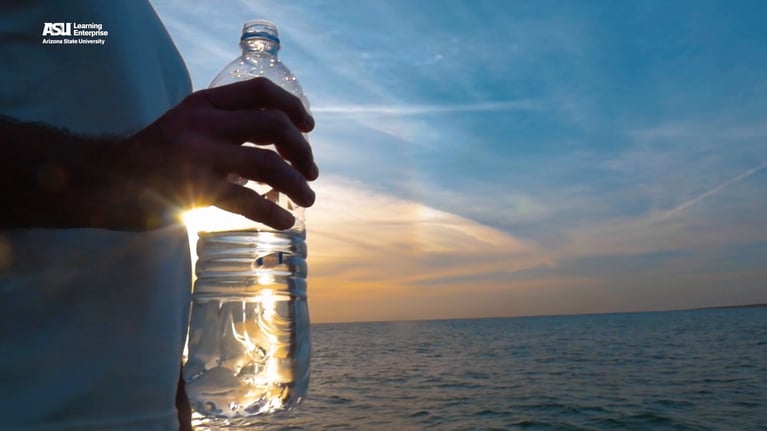Plastic can be found in everything from airplanes to water bottles and a number of vastly different objects. So, what's the difference between these plastics and what makes plastic so versatile? The answer lies in polymers and their structure. Find out how the smallest differences in plastic polymer structure have a big impact on its characteristics.
Did you know what, as a human, you share with a plastic bottle?
Well, both you and the plastic bottle are a result of polymers - large macromolecules that are made up of repeating chemical units called monomers.
DNA that stores your genetic information is a naturally occurring BIOpolymer, and polyethylene is a SYNTHETIC polymer that is found in common plastics. Polymers are not only a part of US, but it has transformed our lives in modern society. This is why polymers have a significant place when discussing the chemistry of modern materials.
Different polymers result from monomers combining in different ways.
For example, you could have a polymer that is the result of a single monomer repeating in a chain-like fashion. Another example would be if two different monomers alternate with one another in the polymer chain.
How the monomers are organized, and the types of atoms present in a monomer can influence the polymer’s physical and chemical properties.
The most common form of plastics that are found in our daily lives like plastic bottles, grocery bags, clear wrapping used in the kitchen, and modern-day water pipes are made predominantly with different types of polyethylene.
Let’s pause for a minute here and think about how different each of these examples are. A grocery bag certainly looks and feels quite different from a hard and sturdy water pipe, and these are again quite different from clear, thin plastic wraps that help us store leftovers.
So, how can they ALL be examples of polyethylene?
The answer lies in the polymer structure and how it in turn affects the density to form various types of polyethylene.
To create polyethylene, ethylene monomers with a carbon-carbon double bond polymerize to create a simple hydrogen carbon chain. The chains can vary in length, and some chains will be short and some can be long. High and low-pressure processes can be used to create “branches” to the main polyethylene chain to create different variations.
Less branches mean that polyethylene chains can pack close to one another, resulting in higher density. In comparison, polyethylene chains with a lot of branching cannot pack together easily, resulting in lower density.
Think about a water pipe. You would want your pipe to have some flexibility, but for the most part, you would want it to be strong and durable to be able to hold and carry water.
So, it is not surprising that HIGH-DENSITY polyethylene is most often used to make pipes and fittings.
High-density polyethylene contains little branching, so the linear polymers can pack closely together to create a more durable, rigid product, and some presence of branching does allow for movement.
Oppositely, what type of polyethylene would be used to create the clear plastic wrap found in your kitchen?
As you know, plastic wrap is quite flexible. You could take a piece of it and squeeze it into a ball with your hand or stretch it out to cover a dish.
LOW-density polyethylene allows the plastic wrap to be flexible because these polymers include more branching than high-density polyethylene. Due to this, the polymers are less tightly packed, and this allows us to mold its shape to what we need it to be.


